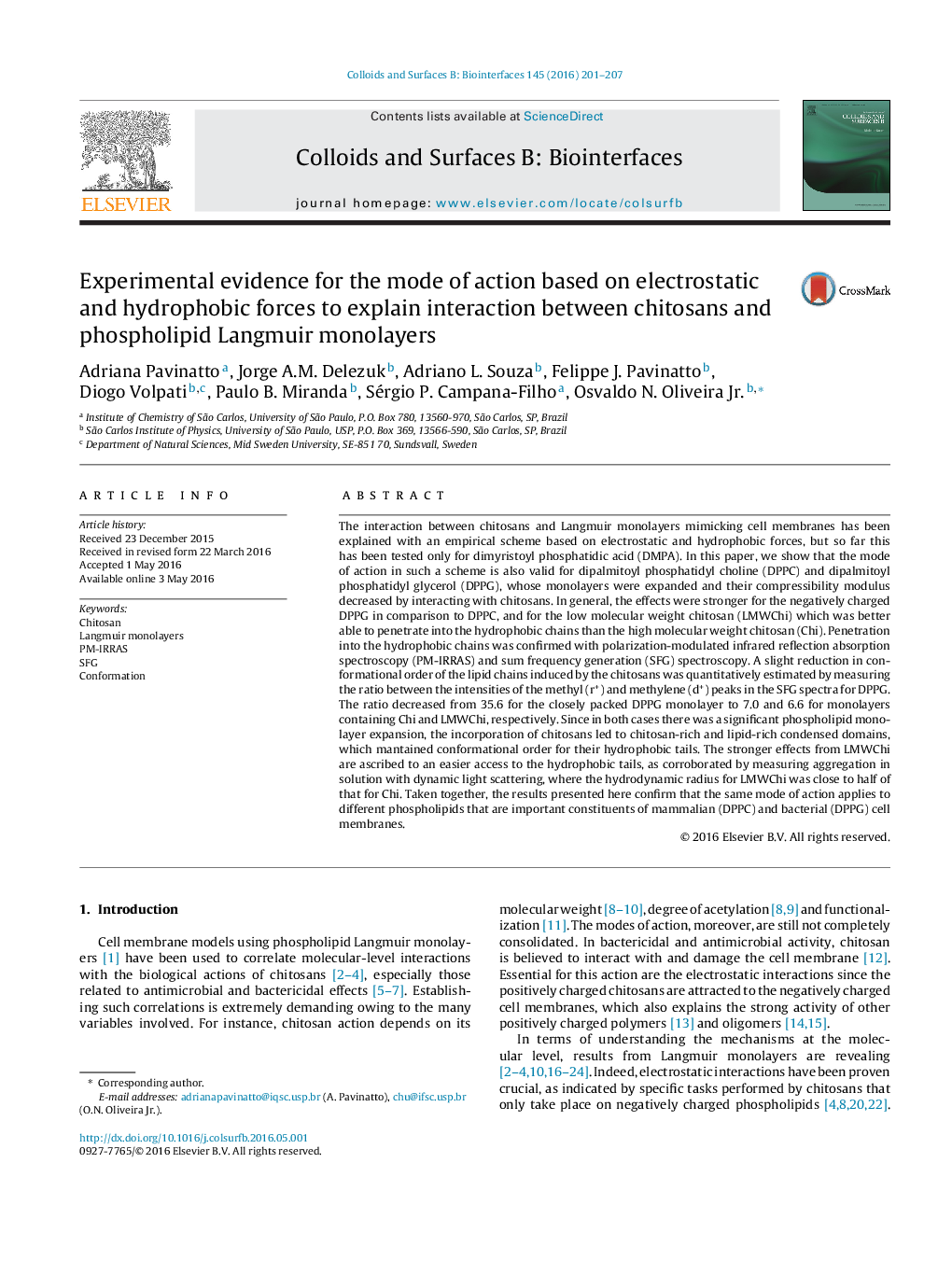| کد مقاله | کد نشریه | سال انتشار | مقاله انگلیسی | نسخه تمام متن |
|---|---|---|---|---|
| 598940 | 1454259 | 2016 | 7 صفحه PDF | دانلود رایگان |
• The model explaining interaction between chitosan and DMPA is also valid for DPPC and DPPG monolayers.
• Low molecular weight chitosans interact more strongly with DPPC and DPPG monolayers.
• Penetration into the hydrophobic chains was confirmed with PM-IRRAS and SFG data.
• Chitosan-rich and lipid-rich condensed domains are formed with chitosan incorporation.
• Rh for LMWChi is smaller than for Chi which explains its easier access to hydrophobic tails.
The interaction between chitosans and Langmuir monolayers mimicking cell membranes has been explained with an empirical scheme based on electrostatic and hydrophobic forces, but so far this has been tested only for dimyristoyl phosphatidic acid (DMPA). In this paper, we show that the mode of action in such a scheme is also valid for dipalmitoyl phosphatidyl choline (DPPC) and dipalmitoyl phosphatidyl glycerol (DPPG), whose monolayers were expanded and their compressibility modulus decreased by interacting with chitosans. In general, the effects were stronger for the negatively charged DPPG in comparison to DPPC, and for the low molecular weight chitosan (LMWChi) which was better able to penetrate into the hydrophobic chains than the high molecular weight chitosan (Chi). Penetration into the hydrophobic chains was confirmed with polarization-modulated infrared reflection absorption spectroscopy (PM-IRRAS) and sum frequency generation (SFG) spectroscopy. A slight reduction in conformational order of the lipid chains induced by the chitosans was quantitatively estimated by measuring the ratio between the intensities of the methyl (r+) and methylene (d+) peaks in the SFG spectra for DPPG. The ratio decreased from 35.6 for the closely packed DPPG monolayer to 7.0 and 6.6 for monolayers containing Chi and LMWChi, respectively. Since in both cases there was a significant phospholipid monolayer expansion, the incorporation of chitosans led to chitosan-rich and lipid-rich condensed domains, which mantained conformational order for their hydrophobic tails. The stronger effects from LMWChi are ascribed to an easier access to the hydrophobic tails, as corroborated by measuring aggregation in solution with dynamic light scattering, where the hydrodynamic radius for LMWChi was close to half of that for Chi. Taken together, the results presented here confirm that the same mode of action applies to different phospholipids that are important constituents of mammalian (DPPC) and bacterial (DPPG) cell membranes.
Low molecular weight chitosan has a stronger effect on phospholipid membrane models which represent mammalian (DPPC) and bacterial (DPPG) membranes.Figure optionsDownload as PowerPoint slide
Journal: Colloids and Surfaces B: Biointerfaces - Volume 145, 1 September 2016, Pages 201–207
